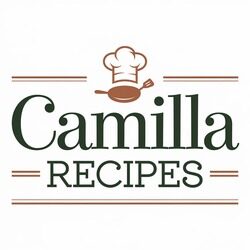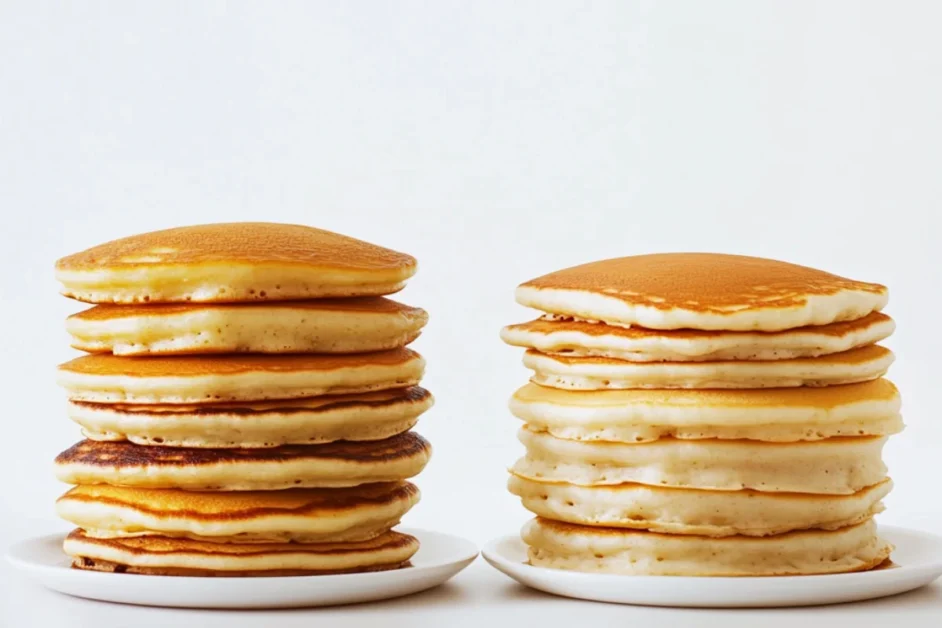Understanding Kodiak Pancakes: A Nutritional Overview
Kodiak Pancakes have taken the breakfast world by storm, offering a nutrient-packed alternative to traditional pancake mixes. Known for their high protein content, these pancakes are a favorite among fitness enthusiasts, busy individuals, and anyone seeking a healthier breakfast option. Unlike regular pancakes that are often carb-heavy and lacking nutritional density, Kodiak Pancakes stand out by combining protein, fiber, and essential nutrients.
Their main selling point? They are crafted with whole grains and enriched with extra protein, making them an ideal choice for muscle recovery, weight management, or simply fueling an active day. But while the mix itself is highly versatile, one of the most debated aspects of Kodiak Pancakes lies in the choice of liquid—milk or water—which significantly impacts the texture, flavor, and nutrition of the final product.
The Role of Liquid in Pancake Batter: Milk vs. Water
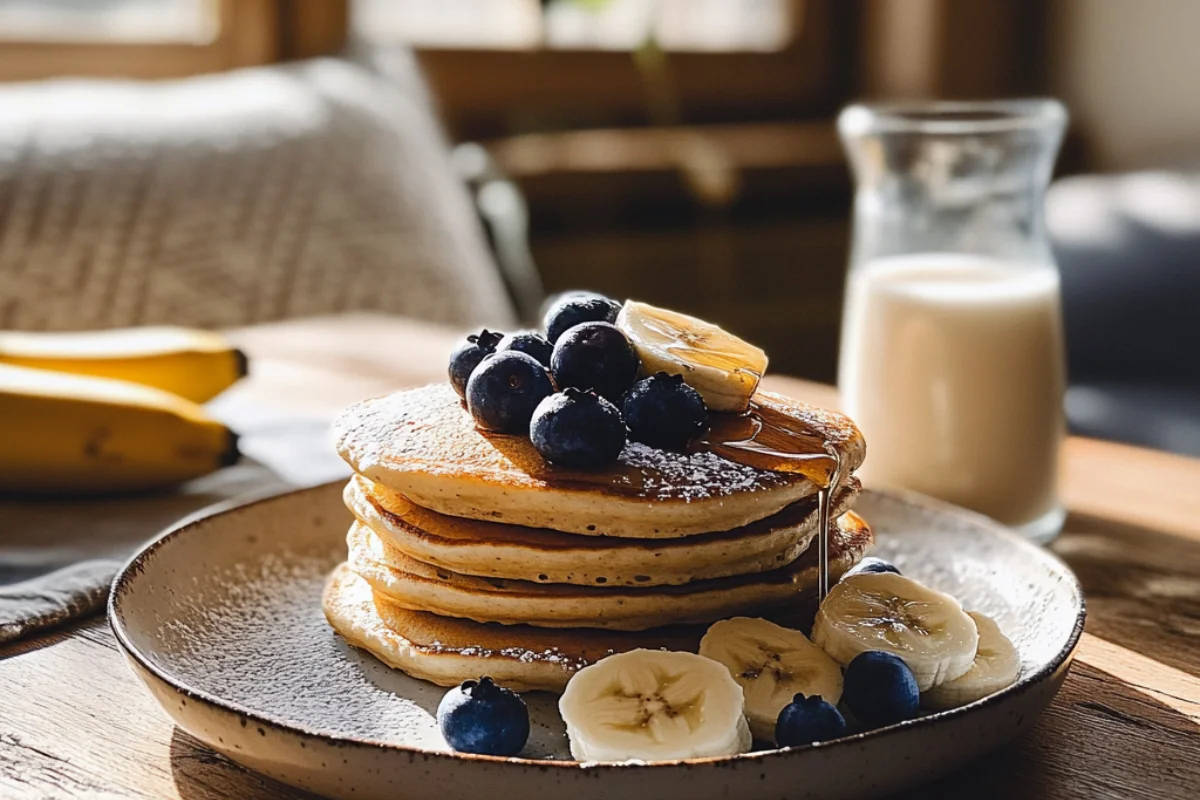
When preparing pancake batter, the liquid component plays a crucial role in determining the batter’s consistency, texture, and overall flavor. For Kodiak Pancakes, both milk and water are common liquid options, but each offers a unique impact:
- Milk: Using milk introduces creaminess to the batter, which enhances the richness and softness of the pancakes. Milk also adds additional nutrients like calcium, vitamin D, and natural fats, which can improve the nutritional profile.
- Water: Water, on the other hand, is a more neutral option. It keeps the pancakes lighter and crisper while allowing the original flavors of the Kodiak mix to shine. However, it doesn’t contribute any additional nutrients or flavor complexities.
While both liquids can yield delicious pancakes, the choice between milk and water often comes down to personal preference and dietary goals.
Key Differences Between Using Milk and Water in Kodiak Pancakes
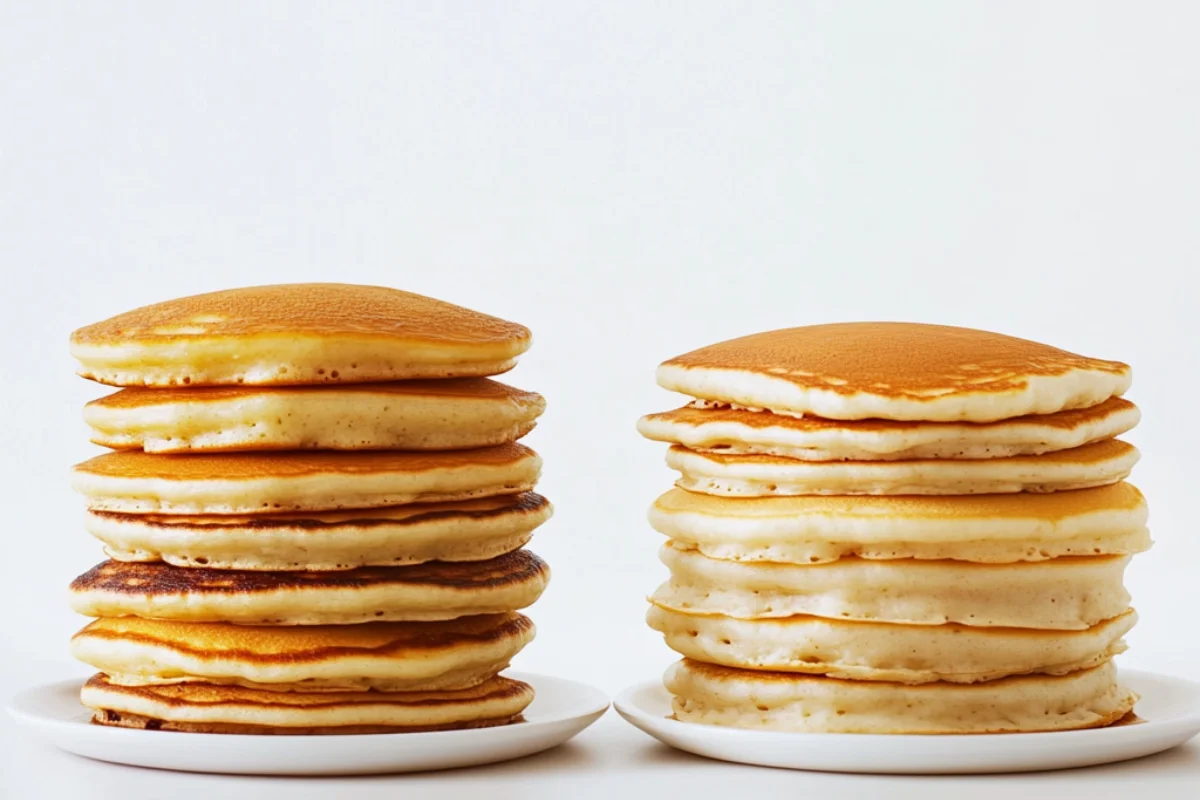
When deciding between milk and water for your Kodiak Pancakes, it’s important to consider the following:
1. Texture
- Milk results in pancakes with a softer, fluffier texture. The added fat in milk provides a velvety finish that feels indulgent.
- Water creates lighter, slightly denser pancakes with a firmer bite.
2. Flavor
- Milk enriches the batter, introducing a subtle sweetness and creaminess that enhances the overall taste.
- Water has a neutral profile, which highlights the base flavors of the Kodiak mix without adding complexity.
3. Nutrition
- Using milk boosts the protein, calcium, and vitamin D content of the pancakes. However, it also adds extra calories and fats, depending on the type of milk used.
- Using water keeps the recipe lean and lower in calories, making it a great option for those on calorie-restricted diets.
4. Cooking Behavior
- Pancakes made with milk brown faster due to the natural sugars in dairy, giving them a golden appearance.
- Pancakes made with water may cook more evenly and are less likely to burn quickly.
Texture and Flavor: How Liquid Impacts the Final Pancake
Liquid choice has a direct impact on how Kodiak Pancakes feel and taste. When milk is used, the pancakes achieve a melt-in-your-mouth quality, with the added richness complementing toppings like syrup, fruit, or yogurt. Alternatively, pancakes made with water are ideal for a lighter meal, where the emphasis is on the simplicity and purity of the flavors.
For those seeking a middle ground, some cooks blend half milk and half water into their batter, achieving a balance of richness and lightness.
Nutritional Variations: Milk vs. Water in Kodiak Pancake Recipes
For health-conscious eaters, the nutritional differences between milk and water are significant.
- Milk-based pancakes provide a nutritional boost. A cup of milk adds approximately:
- 8 grams of protein
- 300 mg of calcium
- Vitamin D (fortified)
- Water-based pancakes, however, are the better option for reducing calorie intake without sacrificing protein content, as Kodiak mixes already contain a high protein level from whey and other ingredients.
Why Kodiak Pancakes Are Popular Among Health Enthusiasts
The rise of Kodiak Pancakes among health enthusiasts can be attributed to their versatile and nutrient-dense profile. Unlike conventional pancake mixes, which are primarily carbohydrate-based, Kodiak Pancakes are made with whole grains and enriched with protein isolates. This makes them an excellent choice for:
- Athletes who need to meet daily protein goals.
- Weight watchers looking for a low-calorie yet satisfying breakfast option.
- Busy professionals who want a quick, healthy meal that doesn’t require complicated preparation.
Additionally, Kodiak Pancakes are customizable, allowing users to incorporate fruits, nuts, or even spices for added nutritional and flavor benefits.
Overview of the Ingredients in Kodiak Pancake Mix
Kodiak Pancake Mix is crafted with a few core ingredients that prioritize both taste and nutrition. These include:
- Whole Grain Flours: Providing fiber, complex carbs, and a nutty flavor.
- Whey Protein Concentrate: Adding protein to support muscle repair and satiety.
- Leavening Agents: Ensuring fluffy pancakes.
- Sweeteners: Typically minimal and natural, like honey or brown sugar.
The Function of Protein in Kodiak Pancakes
Protein is the star ingredient in Kodiak Pancakes. It not only contributes to their popularity among fitness enthusiasts but also makes them a balanced breakfast option. Protein helps:
- Promote muscle repair and growth.
- Keep you fuller for longer.
- Stabilize blood sugar levels.
Examining the Base Flavors of Kodiak Pancakes
Kodiak Pancakes come in a range of flavors, from classic Buttermilk to more adventurous options like Dark Chocolate and Cinnamon Oat. The base flavors are mild, allowing them to pair well with an array of toppings or mix-ins. This versatility makes them suitable for all palates, whether you prefer savory or sweet breakfasts.
Introduction to Customizing Kodiak Pancake Recipes
One of the best aspects of Kodiak Pancakes is their adaptability. By tweaking the base recipe, you can cater to your personal preferences and dietary needs. Popular customization options include:
- Adding fruit: Blueberries, bananas, or diced apples for a natural sweetness.
- Incorporating spices: Cinnamon, nutmeg, or even pumpkin spice for seasonal flair.
- Boosting protein further: Mixing in Greek yogurt or an extra scoop of whey protein.
- Experimenting with liquids: Swapping regular milk for almond, oat, or coconut milk for unique flavors.
Milk vs. Water: Comparing Pancake Outcomes
Choosing between milk and water when preparing Kodiak Pancakes can have a profound impact on the taste, texture, and nutritional value of your breakfast. Both options have their own sets of pros and cons, depending on your goals and preferences. In this section, we will break down how each liquid influences the outcome of your pancakes, giving you the knowledge to create the perfect stack.
Using Milk in Kodiak Pancakes: Pros and Cons
Milk is the classic choice for pancake batters, and its creamy richness has made it a favorite among cooks who prioritize texture and flavor. However, there are both upsides and downsides to using milk when preparing Kodiak Pancakes.
Pros of Using Milk:
- Enhances the flavor profile of the pancakes by adding natural sweetness and richness.
- Contributes extra nutrients, such as protein, calcium, and vitamin D.
- Improves the texture of the pancakes, making them softer and fluffier.
- Provides a deeper golden-brown color due to the sugars in milk caramelizing during cooking.
Cons of Using Milk:
- Adds calories and fats, which might not align with certain dietary goals.
- Can cause the pancakes to cook more quickly and potentially burn if not monitored.
- Requires availability of milk, which might not always be on hand.
Flavor Enhancement with Milk: Richness and Sweetness
Milk has a unique ability to elevate the richness and sweetness of Kodiak Pancakes, even without additional sweeteners. Whether you’re using dairy milk or plant-based alternatives, the natural sugars and fats contribute a more indulgent taste.
- Dairy milk: Adds creaminess and a subtle sweetness, making it ideal for pairing with fruit or syrup toppings.
- Sweetened plant-based milk: Almond, soy, or oat milk can boost the pancakes’ flavor while complementing the Kodiak mix’s hearty undertones.
How Different Types of Milk (Dairy, Almond, Oat) Affect Pancakes
Using different types of milk offers a variety of outcomes:
- Dairy Milk (Whole, 2%, Skim):
- Whole milk provides maximum creaminess and fluffiness.
- Skim milk is lower in fat but still enhances flavor and texture compared to water.
- Almond Milk:
- Adds a light nutty flavor and fewer calories than dairy milk.
- Works well for those seeking a dairy-free option.
- Oat Milk:
- Creamier than almond milk and imparts a mild sweetness.
- Excellent for creating softer pancakes with a slightly thicker batter.
- Coconut Milk:
- Offers a tropical flavor and extra richness due to its fat content.
- Ideal for pairing with Kodiak’s chocolate or tropical-flavored mixes.
Texture Benefits of Milk-Based Pancakes: Fluffiness Explained
The fats and proteins in milk interact with the Kodiak pancake mix to create a softer, fluffier texture. Milk contributes to the batter’s ability to rise during cooking by:
- Coating the gluten strands in the mix, which prevents over-denseness.
- Introducing air pockets that expand when heated, resulting in a light and airy pancake.
These attributes make milk-based pancakes perfect for those who enjoy a melt-in-your-mouth breakfast experience.
Nutritional Contributions of Milk to Pancakes
Milk is not just a flavor enhancer—it also adds nutritional value to your Kodiak Pancakes. Depending on the type of milk used, here are the key benefits:
- Protein Boost: Each cup of dairy milk provides about 8 grams of protein, complementing the protein content in the Kodiak mix.
- Calcium and Vitamin D: Essential for bone health, milk-based pancakes offer higher levels of these nutrients.
- Healthy Fats: Whole milk provides satiating fats, while plant-based alternatives often include omega-3s or fortified vitamins.
Using Water in Kodiak Pancakes: Pros and Cons
For those seeking a simpler, lower-calorie option, water is an excellent choice for preparing Kodiak Pancakes. Although it lacks the creaminess of milk, water has its own benefits that make it a popular alternative.
Pros of Using Water:
- Keeps the recipe light and lower in calories.
- Highlights the natural flavor of the Kodiak mix.
- Convenient and readily available.
- Allows for consistent cooking without the risk of burning due to sugar content.
Cons of Using Water:
- Results in pancakes that are less rich and fluffy.
- Lacks the added nutrients provided by milk.
- Can create a thinner batter, which might be less satisfying to some.
Simplicity and Convenience of Water-Based Pancakes
One of the biggest advantages of using water is its convenience. Unlike milk, water is universally available and requires no extra effort to prepare. This makes it ideal for:
- Quick, on-the-go breakfasts.
- Camping trips or situations where refrigeration isn’t an option.
- Maintaining a lean and calorie-conscious meal plan.
Comparing the Lighter Texture of Water Pancakes
Water-based pancakes tend to have a lighter and firmer texture compared to milk-based ones. The absence of fats and proteins means the batter doesn’t rise as much, resulting in pancakes that are thinner but still delicious. This texture works well for those who prefer a heartier bite or want a base for savory toppings like eggs and avocado.
Hydration and Consistency: Balancing Water in the Batter
When using water, achieving the right consistency is key to producing perfectly cooked pancakes. Too much water can make the batter overly thin, while too little may result in dense pancakes. To balance the hydration:
- Start with the recommended water-to-mix ratio on the Kodiak packaging.
- Gradually adjust by adding small amounts of water until you reach a smooth, pourable consistency.
- Let the batter rest for a few minutes before cooking to hydrate the whole grains fully.
The Health and Calorie Perspective of Using Water
For those focused on reducing calories without compromising protein intake, water-based Kodiak Pancakes are the optimal choice. A comparison of the two liquids:
- Water: 0 calories per cup, keeping the overall calorie count low.
- Milk: Adds 80-150 calories per cup, depending on the type used.
By opting for water, you can enjoy a lean breakfast while still benefiting from the whole grains and protein inherent in Kodiak Pancake Mix.
Optimizing Your Kodiak Pancake Recipe
Kodiak Pancakes are not only a high-protein, whole-grain breakfast option but also highly versatile. Whether you prefer using milk or water, or even a custom combination, tweaking the recipe to suit your preferences and nutritional goals can help you achieve the perfect pancake every time. This guide will walk you through deciding between liquids, enhancing flavors, and achieving consistent results.
How to Decide Between Milk and Water for Your Pancakes
The choice between milk and water when preparing Kodiak Pancakes often comes down to personal taste, dietary preferences, and cooking goals. Understanding the characteristics of each liquid will help you make the right choice for your needs.
Considerations Based on Personal Taste Preferences
Your preferred flavor and texture are key factors in deciding which liquid to use:
- If you enjoy creamy, indulgent flavors:
Opt for milk. It adds a subtle sweetness and richness that enhances the pancake’s flavor. - If you prefer a lighter, more neutral taste:
Water is the better option, as it keeps the focus on the mix’s natural flavors without adding complexity. - For flexible results:
A combination of milk and water allows you to enjoy the benefits of both, balancing flavor and texture.
Adjusting Liquid Quantities for Desired Texture and Thickness
The amount of liquid used can dramatically alter the texture of your pancakes. Here’s how to adjust based on your preferences:
- For fluffier pancakes:
Use slightly less liquid and let the batter rest for 5-10 minutes to allow the protein and whole grains to fully hydrate and expand. - For thinner, crepe-like pancakes:
Add more liquid until the batter becomes thinner and easily pourable. - For thick, hearty pancakes:
Start with the recommended liquid ratio on the Kodiak package and avoid overmixing the batter, as this can make it too runny.
Enhancing Flavor: Additions for Milk and Water Pancakes
The liquid you use in your pancake batter isn’t the only factor that determines flavor. Adding complementary ingredients can elevate your pancakes to a new level.
Fruits, Syrups, and Spices to Complement Liquid Choices
Here are some ways to enhance your pancakes based on your liquid choice:
- With milk-based pancakes:
- Add fruits like bananas, blueberries, or strawberries for a burst of natural sweetness.
- Top with a drizzle of maple syrup or honey to complement the creaminess.
- Sprinkle in spices like cinnamon or nutmeg for added warmth.
- With water-based pancakes:
- Use savory additions like sautéed vegetables, cheese, or herbs for a hearty breakfast.
- Pair with light, tangy toppings such as Greek yogurt or a squeeze of lemon juice.
- For a sweet option, incorporate a dollop of peanut butter or almond butter.
Customizing your pancakes with these additions ensures a variety of flavors, no matter which liquid you use.
Experimenting with Custom Blends: Mixing Milk and Water
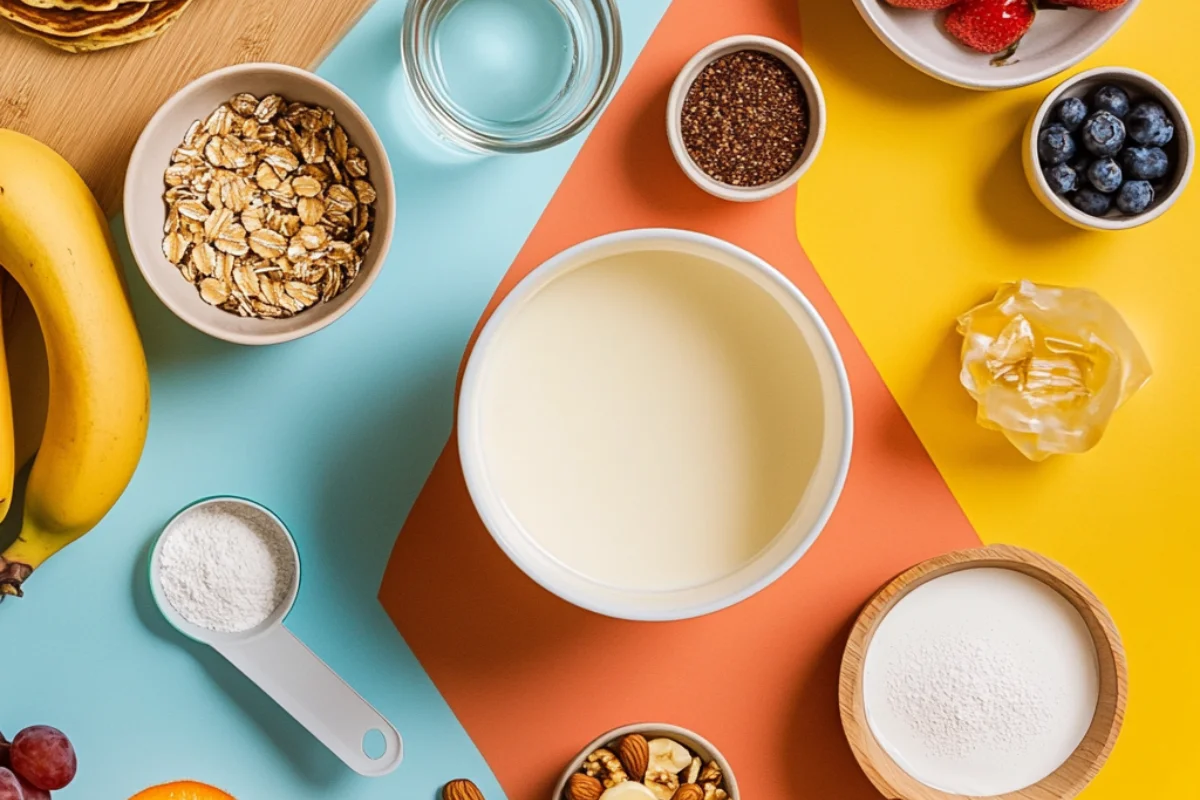
For the ultimate flexibility, try combining milk and water in your batter. This custom blend allows you to strike a balance between richness and lightness.
Suggested Milk-to-Water Ratios:
- 1:1 Ratio: Perfect for balanced flavor and texture, offering mild richness without being too heavy.
- 2:1 Ratio (milk:water): Best for achieving a creamier batter with softer pancakes.
- 1:2 Ratio (milk:water): Ideal for a lighter, crisper pancake while still benefiting from some of milk’s flavor.
Experimenting with different ratios helps you discover the ideal pancake for your preferences.
Tips for Achieving Perfect Kodiak Pancakes Every Time
Perfect pancakes aren’t just about the ingredients; technique matters, too. Here are some tips for consistent success:
Avoiding Common Mistakes When Preparing Kodiak Pancakes
- Overmixing the Batter:
Overmixing activates the gluten in the mix, making pancakes dense and rubbery. Stir gently until just combined. - Using the Wrong Pan Temperature:
Too hot, and the pancakes burn on the outside while remaining undercooked inside. Too low, and they’ll be pale and uneven. Aim for medium heat. - Skipping the Resting Period:
Allowing the batter to rest for a few minutes gives the ingredients time to hydrate, resulting in fluffier pancakes. - Not Preheating the Pan:
Ensure your skillet or griddle is fully preheated before pouring the batter for evenly cooked pancakes.
Storage and Reheating Tips for Pancakes with Milk or Water
Whether you’ve made pancakes with milk or water, proper storage ensures they stay fresh for later use:
- Storing:
- Let the pancakes cool completely before stacking them.
- Store in an airtight container or freezer bag.
- Refrigerate for up to 3 days or freeze for up to 2 months.
- Reheating:
- For soft pancakes, reheat in the microwave for 20-30 seconds.
- For crispy edges, reheat on a skillet over low heat or in a toaster.
These methods preserve the pancakes’ texture and flavor.
Final Thoughts: Balancing Nutrition, Taste, and Convenience
Optimizing your Kodiak Pancake recipe means finding the perfect balance between nutrition, taste, and convenience. Whether you prefer the creamy richness of milk-based pancakes, the simplicity of water-based ones, or a custom blend, there’s no wrong way to enjoy these nutrient-packed breakfasts.
By experimenting with liquid choices, mix-ins, and cooking techniques, you can create a pancake that suits your unique tastes and dietary goals. Remember, the beauty of Kodiak Pancakes lies in their versatility—so don’t be afraid to get creative in the kitchen!
More FAQs About Kodiak Pancakes, Milk, and Water
Here are 10 frequently asked questions to address common concerns and curiosities about Kodiak Pancakes, including the use of milk and water.
1. Can I use non-dairy milk in Kodiak Pancake batter?
Yes! Non-dairy milk options such as almond, soy, oat, or coconut milk work wonderfully in Kodiak Pancake recipes. Each type of non-dairy milk contributes its unique flavor and nutrient profile, so you can choose one that aligns with your dietary preferences.
2. Does using water instead of milk reduce the protein content of Kodiak Pancakes?
Not significantly. Kodiak Pancake Mix already contains a high protein content from its ingredients (like whey protein concentrate). However, using milk—dairy or fortified non-dairy—can add a small additional boost of protein.
3. Why do my pancakes stick to the pan?
This could happen if your pan isn’t preheated properly or you’re not using enough oil or butter. Ensure your skillet is hot and lightly greased before pouring the batter.
4. What is the best milk-to-mix ratio for fluffy Kodiak Pancakes?
The standard ratio is usually about 1 cup of milk to 1 cup of Kodiak Pancake Mix. For extra fluffiness, slightly reduce the milk and let the batter rest for a few minutes before cooking.
5. How can I make Kodiak Pancakes even healthier?
- Use water to keep them low in calories.
- Add fruits like blueberries or bananas for natural sweetness and fiber.
- Incorporate chia seeds or ground flaxseeds for omega-3s and additional nutrients.
6. How does the cooking time differ between milk- and water-based pancakes?
Pancakes made with milk may cook faster due to the natural sugars in milk caramelizing. Monitor the heat closely to prevent burning. Water-based pancakes tend to cook more evenly and are less likely to brown too quickly.
7. Can I prepare Kodiak Pancake batter the night before?
Yes, but only if using water as the liquid. Batter made with milk should be cooked immediately to avoid spoilage. If you prepare it ahead of time, store it in an airtight container in the fridge.
8. Can I mix milk and water in the same batter?
Absolutely! Combining milk and water gives you the best of both worlds—a balance of rich flavor and light texture. A 1:1 or 2:1 ratio of milk to water works well.
9. Do milk-based pancakes brown differently than water-based ones?
Yes, milk-based pancakes brown more quickly and achieve a golden hue due to the lactose (natural sugar) in milk. Water-based pancakes tend to have a lighter, more even appearance.
10. What toppings go best with water-based Kodiak Pancakes?
For water-based pancakes, which have a lighter flavor, try adding:
- Nut butters (e.g., almond or peanut butter)
- Fresh fruits like raspberries or strawberries
- A drizzle of honey or agave nectar
- Savory toppings like avocado, fried eggs.
